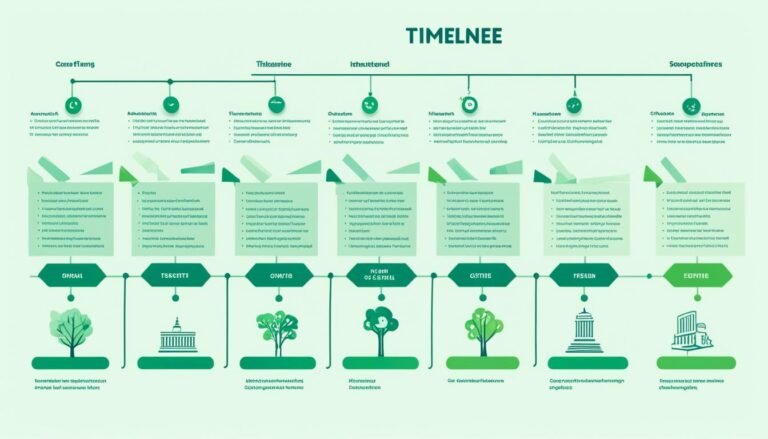Prudential Requirements for Irish Financial Institutions: A Comprehensive Overview
Did you know, by the end of 2022, non-bank financial intermediaries controlled 47.2% of global financial assets? In Ireland, strict rules ensure both banks and non-bank groups follow stringent guidelines. These are meant to stop major risks and keep finances stable.
In Ireland, the base rules started with the Central Bank Act in 1942. They got stronger with the Central Bank Reform Act in 2010. Then came the Single Supervisory Mechanism in November 2014. This gave the European Central Bank more power to watch over and enforce rules for financial health.
This mechanism helps guard against too much lending and risky money moves. It closely watches how banks manage their money, their assets, and the risk they take. This aims to make sure banks are strong and dependable.
Key Takeaways
- The Central Bank of Ireland is a pivotal macro-prudential authority.
- Irish financial institutions operate under the ambit of the Single Supervisory Mechanism since 2014.
- Legislative frameworks like the Central Bank Acts empower the regulatory environment.
- Macro-prudential policies include essential tools like capital buffers and regulatory ratios.
- Non-bank financial intermediaries held 47.2% of global financial assets by the end of 2022.
- The national legislative framework provides for crucial prudential tools to mitigate systemic risks.
- Prudential requirements ensure the stability and reliability of the Irish banking system.
Introduction to Prudential Requirements for Irish Financial Institutions
Prudential requirements help ensure financial stability in Ireland’s institutions. They follow a specific framework, including laws from the Central Bank of Ireland. These laws have been in place since 1942 to manage how banks operate.
The Single Supervisory Mechanism (SSM) controls how risk is handled in banks. This allows clear roles in supervising banks. It’s important to understand how these rules work together with the broader Central Bank of Ireland guidelines.
The CRD IV/CRR guidelines are very important. They say banks must keep a certain amount of money to cover their risks. What counts as money they must keep changes based on how risky the investments are. This is key for keeping the risk in check in banks.
Getting a banking license takes time, around six to 12 months. Once licensed in Ireland, banks can serve all the EEA countries easily. This is thanks to the laws that make countries recognize each other’s banking licenses.
Banks from outside the EEA can also set up in Ireland. But they face a check by the Central Bank of Ireland, not the ECB. The ECB must also approve big changes in Irish banks, like someone buying a lot of the company.
Prudential requirements cover many aspects of running a bank. They include having enough money, not making too risky investments, and watching out for loans that might not get paid back. By following the Central Bank of Ireland guidelines, banks in Ireland work to be safe and honest.
Regulatory Landscape for Irish Financial Institutions
The setup for regulating Irish finance is carefully crafted to make sure things run smoothly and fairly. Ireland’s rules show a deep care for keeping the banking system and customers safe and sound.
Legislative Framework
In Ireland, financial rules come from detailed laws like the Single Supervisory Mechanism Regulation (SSMR) and the Central Bank Acts 1942-2014. These laws help keep the banking world stable and the actions of banks in line.
Regulatory Authorities
Since 2014, the Central Bank of Ireland and the European Central Bank (ECB) team up to watch over Irish banks. The Central Bank looks after over 10,000 finance firms. They now keep a closer eye on banks based on how much risk they might carry.
Licensing Requirements
Banks in Ireland need a special license to operate. They’re put into different groups in the PRISM system. This sorting helps make sure each bank gets the right amount of attention and care.
Getting a license is tough. Banks must show they have enough money, keep risks under control, and have strong leadership. Rules also protect customers, making sure they’re treated fairly. Not following these rules could lead to serious actions that help keep the banking sector in line.
- The Central Bank of Ireland is hiring more people to watch over the finance world better.
- Big firms are kept in check by a Joint Supervisory Team.
- If a bank has to be closed or changed, there are plans to keep the impact as small as possible.
Key Prudential Regulations and Compliance Standards
The Central Bank of Ireland sets out important rules and guidelines for banks. These help keep the financial system safe. They make sure banks are strong enough to handle tough times.
Capital Adequacy Standards
It’s crucial for banks to have enough money for their risks. Banks in Ireland must follow a rule that says they need at least an 8% capital ratio. This rule helps protect people’s money and keeps the financial system solid.
The Central Bank also gives extra regulations to meet these rules. These include using special powers under the CRR and CRD frameworks.
Liquidity Management Requirements
Banks must be good at managing their ready cash. They follow certain rules like the LCR and NSFR to make sure they can pay back money quickly. The EU’s Regulation No 575/2013 and its updates guide these standards. By sticking to these rules, banks stay away from cash troubles.
Solvency Ratios
Keeping enough money to cover losses is key for Irish banks. They watch their tier 1 capital ratio closely to stay out of financial danger. The Central Bank’s strict monitoring under PRISM and other laws helps keep banks in line.
This extra oversight, like the Asset Covered Securities Amendment Act 2007, is also used. It adds another level of protection for the banking system.
| Regulation Focus | Key Compliance Requisites |
|---|---|
| Capital Adequacy Standards | Minimum capital ratio of 8% of risk-weighted assets |
| Liquidity Management Requirements | Liquidity coverage ratio (LCR) and net stable funding requirement (NSFR) |
| Solvency Ratios | Tier 1 capital ratio and strict supervision under PRISM |
Prudential Requirements for Irish Financial Institutions
To make Ireland’s financial sector strong and clear, it’s vital to know its rules well. The PRISM system is key here. It matches what we expect companies to do with the risks they face.
Probability Risk and Impact System (PRISM)
The Central Bank of Ireland uses PRISM for smart supervising. This way, the bank can watch over risky areas better. It aims to be ahead, checking risks before they cause problems.
Companies are put into groups based on how risky they are and what harm they could cause. The highest risk should keep a buffer of 8% of their safe assets against troubles.
Core and Non-Core Supervisory Activities
In Ireland, the ECB looks after essential banking checks. They care for things like stress tests to keep banks stable. The ECB handles these to protect the whole economy.
Then there’s the Central Bank of Ireland, focusing on helping people understand finance and protecting them. Splitting these duties helps make sure everything is covered well.
Macro-Prudential Policy Framework
The big-picture rules in Ireland work to avoid risks that could shake our financial world. Laws since 2014 make this possible. They let us set up protections like special savings for rough times.
One of these is the 2.5% Capital Conversion Buffer added slowly from 2016 to 2018. It’s a safety net for banks when times get tough.
| Country | Supervisory Authority | Established Year |
|---|---|---|
| Luxembourg | Commission de Surveillance du Secteur Financier | 1998 |
| Netherlands | Council of Financial Supervisors | 1999 |
| Portugal | National Council of Financial Supervisors | 2000 |
| Germany | Federal Financial Supervisory Authority (Proposed) | —- |
| Belgium | National Bank of Belgium | —- |
Conclusion
The Irish financial sector is closely watched over by the Central Bank of Ireland and the European Central Bank. They work hard to keep financial institutions stable. This helps in times of economic changes while protecting the customer.
They use strict rules like PRISM and CRR/CRD IV. These rules show a big promise to keeping the economic system healthy. It makes sure Irish banks follow global standards, making the financial world more steady.
Ireland’s banks are carefully checked through the Fitness and Probity Regime and regular visits. This, along with tough money rules and how they have to plan to use money, helps keep the financial world in a good state. So, the many rules look after the banks and the money in a strong way, earning people’s trust even when the economy is tough.
Source Links
- A Macro-Prudential Policy Framework for Ireland
- Prudential Consolidation: A Perfect Storm?
- Banking Regulation 2024 – Ireland | Global Practice Guides
- Prudential requirements for credit institutions and investment firms
- In review: prudential regulation of banks in Ireland
- Explainer – What is financial regulation and why does it matter?
- The Regulatory Landscape of Supervision and Resolution of Financial Institutions: A Cross-border Perspective | Financial Institutions in Distress: Recovery, Resolution, and Recognition
- Fintech Laws and Regulations | Ireland
- Regulatory Requirements and Guidance for Credit Institutions
- The Irish Financial Services sector: a Prudential Regulation Perspective
- Capital Requirements and Macroprudential Policy
- The role of central banks in prudential supervision
- Investment Firms: New prudential rules will apply from 26 June 2021
- Supervision – How we regulate
- Report on the Observance of Standards and Codes: Ireland — Banking Supervision








